Top 10 Best Selling Genesis Games of All Time
Picture it: the summer of ’93. Your mom’s beige station wagon is baking in the K-Mart parking lot while you race inside, allowance burning a hole in your Bugle Boy shorts. The electronics aisle hums like a carnival—Demo TVs stacked ceiling-high, Sonic’s blue blur streaking across every screen. Kids, teens, dads in polo shirts, everyone is elbow-to-elbow, clutching those unmistakable black clamshell cases. Blockbuster shelves empty out faster than your Hi-C Ecto Cooler. The Sega Genesis isn’t just popular; it’s a cultural bonfire. Nintendo might have had the mascot war, but Genesis had attitude, blast processing, and that whisper—‘Segaaa!’—that still echoes in our collective memory. Back then, we measured weekends by cartridges conquered and neighborhood bragging rights earned. So, crack open a fresh pack of Bubble Tape, flip your cap backward, and join me as we count down the best selling Sega Genesis games ever to dominate American living rooms.

10. Sonic & Knuckles
U.S. Release: October 18, 1994
U.S. Copies Sold: ≈0.85 million
Sonic & Knuckles felt like Sega sneaking a late-night slice of madness into the 16-bit pizza box. The cartridge itself looked different—bigger, hinged, practically begging you to slap another game on top. Lock-On Technology sounded like black magic to our tween ears, and, honestly, it kinda was. One minute you’re blasting through Mushroom Hill, the next you’re plugging in Sonic 3 and unlocking an entire secret campaign. That blew minds on the school bus faster than a questionable trade of holographic basketball cards. The graphics pushed every last drop out of the Genesis, layering parallax backgrounds that scrolled smoother than the pencil across your math homework you were ignoring. And Knuckles, the red echidna with an attitude even sharper than his dreadlock fists, instantly gained cult-favorite status. The soundtrack? Pure groove—organ riffs, jungle drums, and that funky desert jam. Sales may have been lower than earlier Sonic hits, but every collector remembers the day they first flipped open that crazy-top cartridge. That hinged lid became the unofficial badge of honor for serious Genesis veterans everywhere.
What Made This Game A Hit in the American Household
Hedges parted for that weird stackable cartridge; it felt futuristic and customizable. Kids loved feeling like engineers, plugging Sonic 2 or 3 on top and discovering hidden levels. The variety, the slick two-player competition, and Knuckles’ fresh playstyle kept weekend marathons alive long after other platformers gathered dust on shelves.

9. Jurassic Park
U.S. Release: June 10, 1993
U.S. Copies Sold: ≈0.9 million
By 1993, dinosaurs ruled every cereal box, so a Jurassic Park video game was inevitable. The Genesis version, though, went a step further by letting you play as Dr. Grant or—cue the raptor shriek—the Velociraptor. Choosing the predator felt downright rebellious, especially after parents just forked over movie tickets and plastic dino toys. The graphics were moody, drenched in swampy greens that made the jungle levels feel sticky. Those digitized raptor roars rattled the family TV speakers and occasionally the neighbor’s patience. The Grant stages offered methodical platforming with tranquilizer darts, while the raptor campaign turned the whole game into a fang-first speed run. Every kid compared cheat codes in the cafeteria to find that secret waterfall stash of health kits. Critics griped about slippery controls, yet the license was hotter than a July sidewalk. It moved nearly a million cartridges, becoming the de-facto birthday present for any dino-obsessed middle-schooler clutching a copy of Michael Crichton’s novel. Plus, the box art alone—glossy black with the familiar T-Rex skeleton—practically screamed, “rent me tonight!” to every kid.
What Made This Game A Hit in the American Household
Huge movie hype, a playable raptor, and that iconic soundtrack turned the cartridge into an event. Friends swapped roles on sleepovers, arguing over who’d beat the tyrannosaur first. The brand recognition pulled in casual gamers, while the two distinct campaigns doubled replay value—perfect for stretching limited allowance money back then.

8. Street Fighter II: Special Champion Edition
U.S. Release: September 27, 1993
U.S. Copies Sold: ≈1.0 million
Capcom finally answered every Genesis owner’s plea in late ’93 with Street Fighter II: Special Champion Edition, and bedrooms across America erupted into impromptu arcades. Sure, the six-button controller was optional, but we begged for it at Christmas so we could whack out Hadoukens without cramping our thumbs. The roster felt enormous—16 colorful warriors, each with bonus costume swaps in Champion Mode. Hearing the announcer bark “Round One—Fight!” on your own TV felt like you’d smuggled the mall arcade into the house. Neighborhood tournaments sprang up with house rules about no spamming E. Honda’s Hundred Hand Slap. The graphics were a hair less vivid than the SNES port, but the faster speed setting more than compensated. Plus, Battle Mode let everyone finally settle playground arguments over who was the real Ryu master. Between word-of-mouth, competitive bragging, and that irresistible two-player hook, over a million American gamers threw down on digital pavement until their D-pads literally wore smooth. Parents devised makeshift curfews, yet the click of plastic buttons kept echoing well past bedtime for exhausted adults.
What Made This Game A Hit in the American Household
Arcade authenticity in the living room, fierce couch competition, and the novelty of speed toggles hooked teenagers instantly. The game rewarded hours of practice yet welcomed button-mash newcomers. Word spread through school hallways, and every weekend featured bracket sheets, soda stains, and that unforgettable sonic boom echoing down the hallway.

7. Madden NFL 95
U.S. Release: August 15, 1994
U.S. Copies Sold: ≈1.1 million
Madden NFL 95 didn’t just win over gridiron geeks—it practically wrote the playbook for living-room trash talk. Genesis owners popped in the cartridge and were greeted with the first full NFLPA license, meaning real players, real stats, and, finally, the Dallas Cowboys actually looked like the Dallas Cowboys. The new horizontal field view felt cinematic, letting you read defenses like a junior John Madden. We scribbled audibles on notebook paper and argued about run-vs-pass percentages as if ESPN cameras were rolling. The speed was blistering; you could hammer A for a turbo burst that sent your running back streaking like a bottle rocket on the Fourth of July. Season Mode saved stats to battery backup, so siblings fought over whose franchise file got priority. Even moms took interest, asking why the living room sounded like a Super Bowl party on a random Tuesday night. By season’s end, Genesis copies had moved past the million mark, cementing EA’s sports dynasty. Local tournaments crowned champions, and losing players endured gloating touchdown dances right on the couch daily.
What Made This Game A Hit in the American Household
Real player names, TV-style presentation, and trash-talk-friendly multiplayer turned football Sundays into nightly events. The save feature encouraged long seasons, creating neighborhood rivalries that lasted months. Easy pick-up controls welcomed casual fans, yet hidden strategic depth hooked aspiring coaches. Winning meant bragging rights, jerseys at school, and endless replay sessions.

6. Disney’s Aladdin
U.S. Release: November 11, 1993
U.S. Copies Sold: ≈1.3 million
Disney’s Aladdin on Genesis arrived hot on the heels of the movie’s VHS release, and if you thought the film was colorful, the game was practically neon fireworks. Virgin Games teamed with Disney animators to hand-draw every frame, making Aladdin’s sword swipes look ripped right off the cel sheets. Suddenly, platforming felt like controlling a Saturday-morning cartoon. Players dashed across Agrabah’s rooftops, sliced through barrels, and rode a lava-spewing carpet escape that still gives sweaty-palms flashbacks. The controls were tight, but the real hook was style—flapping turban-vendors, flustered camels, and that sly Genie giving thumbs-up at checkpoints. Even the apples you threw looked juicy. Schoolyard debates erupted over whether the SNES version, sans sword, was the ‘kiddie’ port. Spoiler: Genesis usually won that argument, and the sales numbers backed it up. Roughly 1.3 million U.S. kids and parents traded allowance coins and coupons for a copy, adding an extra Arabian Night to their game shelves. Even today, speedrunners flock to it, praising the fluid animation and forgiving hitboxes that reward pure platform rhythm and artistry.
What Made This Game A Hit in the American Household
Hand-drawn animation, movie-accurate music, and that flashy sword gave Genesis owners bragging ammunition against Nintendo friends. Parents recognized the Disney name, making the purchase feel ‘safe.’ Fast gameplay and vivid visuals kept kids glued, while secret gems and bonus stages provided just enough challenge to stay fresh for months after.
Hot Retro Product:
Looking to rebuild your 16-bit library? Our friends at Rancho Retro Games have a pristine Sega Genesis System bundle bundled with Sonic the Hedgehog, a perfect starting point for anyone chasing those sega genesis best selling games. Snag the console, one controller, and all cables in a single click—no flea-market guesswork. Supplies are limited, so relive the magic while this deal still blinks green.

5. NBA Jam
U.S. Release: March 4, 1994
U.S. Copies Sold: ≈1.5 million
NBA Jam crash-landed onto Genesis hardwoods in ’94 and immediately replaced PE class as the favorite way to sprain thumbs. Two-on-two arcade action, no fouls, and courts that felt smaller than your living-room rug meant nonstop scoring. The exaggerated player sprites—heads practically bobble-size—helped you spot Barkley’s grimace or Pippen’s smirk even on a 19-inch CRT. But let’s be honest: everybody booted the game just to hear ‘He’s on fire!’ crackle through tiny TV speakers, followed by a flaming ball that could melt plastic. Secret characters like Bill Clinton and the Fresh Prince fueled playground rumors and rental store demand. Turbo meters forced strategy, but shove mechanics invited pure chaos; friendships were forged and occasionally fractured in overtime. The best part? You didn’t need deep basketball knowledge—just quick reflexes and a willingness to mash buttons like you’re trying to win a radio contest. With around 1.5 million copies crossed over in the States, NBA Jam dunked its way into sports-game royalty. Even today, its wild announcer lines echo at retro tournaments and barcades nationwide every weekend.
What Made This Game A Hit in the American Household
Fast rounds, over-the-top dunks, and hyperbolic commentary created instant party magic. No complex playbooks—just shove, shoot, repeat. Secret codes added mystique, encouraging rentals and magazine purchases for unlock lists. Multiplayer thrills meant siblings and friends kept returning, inflating sales faster than a full-court alley-oop during that long hot ’94 summer.

4. Sonic the Hedgehog 3
U.S. Release: February 2, 1994
U.S. Copies Sold: ≈1.8 million
Sonic the Hedgehog 3 blasted onto store shelves on Groundhog Day 1994, and for many of us the blue blur replaced Punxsutawney Phil as the season’s real prognosticator. The opening Angel Island Zone immediately flexed bigger sprites, richer colors, and a dynamic soundtrack rumored—correctly or not—to feature Michael Jackson’s uncredited riffs. Elemental shields changed everything: the fire dash scorched wooden bridges, the electric shield magnetized rings, and the bubble shield let you breathe underwater at last. Split-screen two-player races on brand-new tracks spawned heated sleepover tournaments, complete with stopwatches for photo-finish arguments. Save slots meant you could finally pause a quest without leaving the Genesis humming all night. Although the adventure felt a bit short, the “To Be Continued” cliffhanger teased Lock-On magic with Sonic & Knuckles, making the pair a must-buy combo. Roughly 1.8 million U.S. copies sped out the door, proving the hedgehog still had plenty of rings left in his shoes. And let’s not ignore the carnival-themed bonus stages—rotating spheres that turned living rooms into dizzy light shows for wide-eyed young players.
What Made This Game A Hit in the American Household
New graphics, save files, and that mysterious Jackson vibe refreshed the Sonic formula. Elemental shields deepened gameplay, while two-player races extended replay value. Parents recognized the mascot, kids loved the speed—sales magic. The promised link with Sonic & Knuckles pushed even cautious buyers to grab a copy quickly back then.

3. Mortal Kombat
U.S. Release: September 13, 1993
U.S. Copies Sold: ≈2.0 million
Mortal Kombat’s arrival on September 13, 1993—immortalized as ‘Mortal Monday’—made the Genesis aisle look like Black Friday before sunrise. While the Super Nintendo version shipped bloodless, the Genesis cart stashed a simple, devilish code (A,B,A,C,A,B,B) that restored every crimson pixel. Suddenly parents, politicians, and late-night talk shows all had opinions about our entertainment choices. Meanwhile, we just wanted to nail Sub-Zero’s spine-rip Fatality before dinner. The digitized fighters looked eerily realistic for the time, and the booming ‘Finish Him!’ turned living rooms into makeshift arcades. Two-player mode fostered rivalries so intense that some friends demanded controller sterilization to prevent “sweaty-hand advantage.” Beyond shock value, the tight combo system rewarded practice; uppercuts never felt so satisfying. Strategy guides flew off magazine racks, teaching kids the value of the Konami Code’s less-famous cousin. With roughly two million U.S. units sold, Mortal Kombat proved controversy sells—and that Genesis’ grit resonated with a country craving edgier entertainment than plumber pipes. Arcade purists cheered, rental shops struggled to keep cartridges stocked, and school principals debated banning ninja T-shirts on campus.
What Made This Game A Hit in the American Household
Genesis kept the blood, delivering arcade accuracy and instant bragging rights. The cheat code buzzed through playgrounds within hours, fueling curiosity. Parents protested, which only boosted desirability. Tight controls, shocking fatalities, and intense head-to-head action guaranteed repeat plays, pushing sales past two million despite the lingering controversy of the era.

2. Sonic the Hedgehog
U.S. Release: June 23, 1991
U.S. Copies Sold: ≈3.54 million
Sega’s original Sonic the Hedgehog rocketed onto the scene in June 1991, bundled with many Genesis consoles and turning sleepy households into speed-run laboratories overnight. Nintendo had Mario’s friendly hop, but Sonic delivered roller-coaster loops, corkscrew springs, and that triumphant jingle when you hit the signpost. The Blue Blur embodied early-’90s cool—sneakers, finger wag, zero patience. Even the packaging oozed attitude, with scribbled gridlines that looked like they’d been torn from a notebook. Green Hill Zone’s palm-tree paradise drew us in, and Marble Zone’s lava pits spat us back out, sharpened. Blast processing might’ve been marketing smoke, yet the silky scrolling felt magically faster than anything in Uncle Phil’s hardware store. Friends timed each other to see who could finish Act Two the quickest; losers fetched the Surge soda. With nearly 3.5 million U.S. copies sold—many riding shotgun with the console—Sonic didn’t just match Mario; he changed the conversation from how to play games to how cool games could feel. That carefree swagger resonated during recess debates and still echoes whenever the SEGA chant plays.
What Made This Game A Hit in the American Household
Bundled consoles rocketed sales, but the game’s speed and attitude kept players hooked. Bright levels, catchy music, and flashy loop-de-loops mesmerized kids and adults alike. It felt modern, rebellious, different—exactly what Sega’s marketing promised. Owning Sonic meant you were part of the ‘cool crowd,’ and the numbers proved it big.

1. Sonic the Hedgehog 2
U.S. Release: November 24, 1992
U.S. Copies Sold: ≈4.34 million
Sonic the Hedgehog 2’s U.S. launch on ‘Sonic Tuesday’—November 24, 1992—wasn’t just a release date; it was a nationwide party. Toys ‘R’ Us opened early, 7-Up offered limited cans, and MTV aired commercials like it was a blockbuster film. The sequel doubled down on everything: larger sprites, brand-new zones, the twisty chemical plant, and the introduction of Miles ‘Tails’ Prower, the two-tailed sidekick younger siblings finally got to control. Super Sonic, unlocked by gathering seven Chaos Emeralds, transformed speed into a golden frenzy that melted wrists and D-pads alike. Split-screen competition mode settled more playground feuds than rock-paper-scissors ever could. The soundtrack, from the breezy Emerald Hill theme to the techno-thump of Metropolis, still lives rent-free in our heads. Approximately 4.34 million American copies sprinted off shelves, helped by holiday bundling and pure word-of-mouth momentum. Sonic 2 didn’t just become the best selling Sega Genesis game—it crystallized the console’s legacy in 16-bit history. Even now, speedrunners study its physics, and retro collectors place boxed copies front-and-center like sacred artifacts on the gaming shrine shelf.
What Made This Game A Hit in the American Household
Perfect pacing, new character Tails, and holiday timing created a marketing supernova. Polished levels, hidden Super Sonic, and competitive races kept cartridges spinning for years. Parents saw value in bundled consoles, while kids bragged about new moves. Word spread quickly—if you owned a Genesis, you simply needed Sonic 2 then.
Closing Thoughts
Scrolling back through these cartridges—these best selling Sega Genesis games—feels like flipping an old photo album—every pixel, every chiptune chord, transports us to living rooms and sleepovers. The best selling Genesis games weren’t software; they were social glue, teaching us teamwork, rivalry, and, yes, the lesson of hit-reset rage. Maybe you saved allowances for that clamshell case, or maybe you snagged a cart with the label. Either way, this list of best selling Sega Genesis games helped shape an era when a 16-bit console could make the neighborhood feel connected. The Sega ‘scream’ sparks goosebumps, reminding us of simpler worries—like whether Mom would kick us off before the final boss. So hook up that dusty Model 2, blow into the cartridge (don’t lie—you will), and relive those evenings when happiness was measured in lives and comebacks. Because while graphics evolve, the emotion baked into these plastic shells never ages. And if you’re missing a beloved game, the retro community is always ready to welcome you back, controller in hand, for one more round today again.
Also Check Out:
Still craving more 90s nostalgia? Check out our roundup of the Best 90s Video Game Consoles of All Time to see where the Genesis stacks up among its peers. And if your attic’s overflowing with old cartridges, our guide on Where to Sell Your Video Games for Cash shows you how to turn plastic memories into spending money—so you can snag that grail copy you’ve been eyeing before somebody else beats you to the checkout.


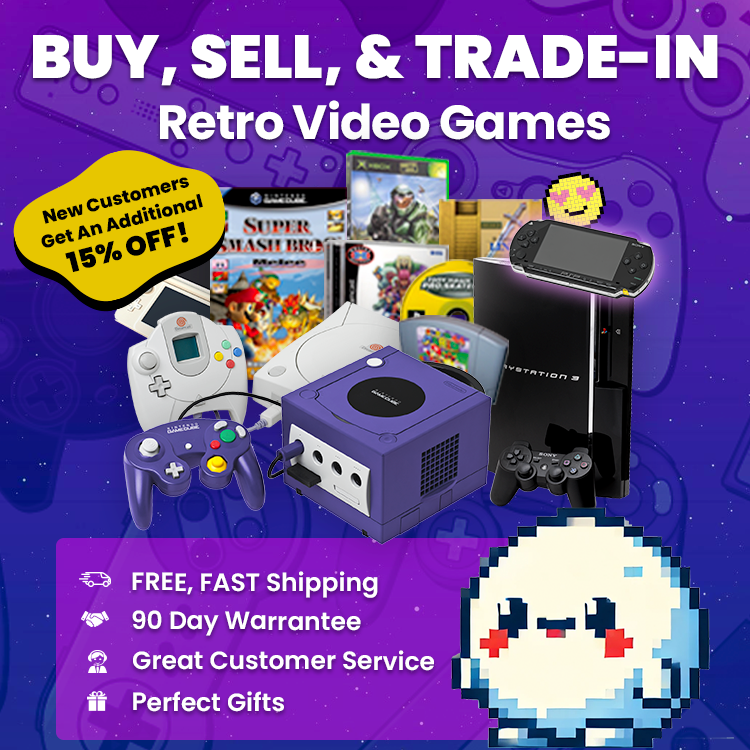



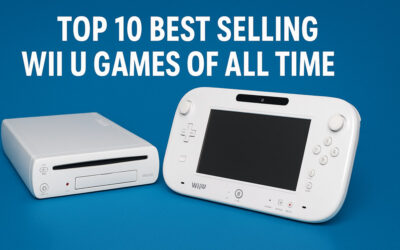


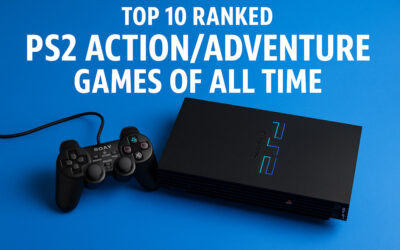


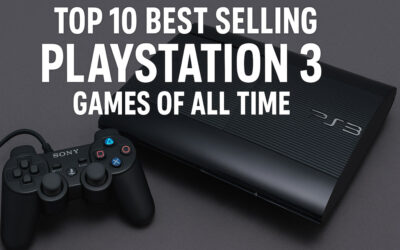
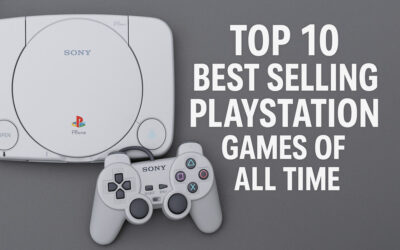



Leave a Reply